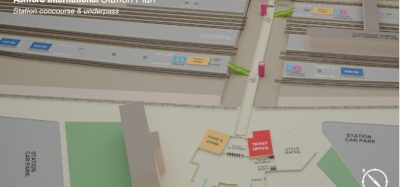How better Information Management is helping Inland Rail to stay on track
Posted: 26 January 2022 | Robbie Pretorius, SNC-Lavalin | No comments yet
Robbie Pretorius, Transport Head of Services – Australia at SNC-Lavalin, explains how the effective use of Information Management is improving the outcome of Australia’s Inland Rail project by ensuring all stakeholders get the assets and information they need, when they need it.


Access to information (as data) of the right quality and at the right time, in a format that is trusted by all parties, is increasingly recognised as a critical enabler of the construction sector’s digital transformation, with the potential to both drive down costs and operation of built assets, and drive up quality.
While Information Management (IM) can often be forgotten in the rush to get a project underway, it is the red thread that runs right across the supply chain, not only acting as the checks and balances to ensure a project stays on track, but also increasingly forming the basis of the insights used to drive emerging technologies, such as digital twins and machine learning.
Successful IM requires that all the information and data produced and received throughout a project’s lifecycle be categorised, maintained, used and stored appropriately, so that project leads can make the most of it to improve project outcomes. However, this can be easier said than done.
IM in action on the Inland Rail project
Successful IM requires that all the information and data produced and received throughout a project’s lifecycle be categorised, maintained, used and stored appropriately, so that project leads can make the most of it to improve project outcomes.
A good example of IM in action is on the Inland Rail project, a freight rail network project that began in 2017 to connect Melbourne and Brisbane, Australia, via regional Victoria, New South Wales and Queensland. The project involves building or upgrading 1,700km of railway, with the aim of enabling cargo and containers to move cross country within 24 hours, providing a huge boost to the economy, as well as creating new hubs across the Outback.
SNC-Lavalin – supporting Turner and Townsend – took on the Program Management Office (PMO) function two years into the Inland Rail programme, which is made up of 13 separate projects and therefore needed a mechanism to efficiently monitor and control deliverables.
In partnership with the Inland Rail IM team, SNC-Lavalin began by installing an information deliverable management framework that aligns to Standard ISO19650, which included a deliverable register, agreed as part of the contract. Any delays are now able to be logged for project managers, who can then check if they will lead to any critical milestones missed and help direct negotiations. This ensures that contractors understand what they need to do by when, and all stakeholders get the assets and information they need, when they need it.
For example, if a contractor requires information from a client’s team in a particular order, this information will be listed with the client’s name against it and the date and transparent for all project stakeholders.
Key benefits of improving IM across the project have so far included:
- A deliverable register that helps to ensure each party receives what they need and clarifies when they need it
- Early warning triggers for missed milestones
- Value for money for the Australian government because Inland Rail is able to categorise, rationalise and prioritise the information they ask for, as well as ensuring its contractual requirements are being met
- Proactive control and decision-making, thanks to connected dashboards and reporting that provide relevant insights
- Better resource planning, including on the client’s side to streamline review and acceptance of deliverables coming from contractors
- Innovation and continuous lessons learned that can be fed through to each of the 13 project parts, so teams can optimise and improve their ways of working all the time
- Improved compliance in terms of contract management by making commissioning more efficient.
Putting an information deliverable management framework in place has also opened the door for all the different project stakeholders to understand more about IM, and how they can better leverage its power and increase their BIM maturity. The PMO team are now looking at creating a deliverable loaded schedule, which links deliverables to the P6 schedule. In this way, critical deliverables are linked to activities and progress can be objectively assessed.
Having a deliverable loaded schedule means, to a certain extent, stakeholders will already be doing BIM 4D. It also helps them to understand that they can do earned value, which is part of BIM 5D. In other words, to validate the progress they’ve made against the price that’s been paid. This is generally thought of as a better indication of progress than looking at the schedule alone.
By providing a more practical translation of the more theoretical ISO19650 and educating teams on the benefits they stand to gain, the PMO resources embedded in the Inland Rail IM team can support greater adoption of IM best practice across the project lifecycle. Not only that, but they can also inspire teams to make build suggestions on existing IM functionality and ensure more efficient project delivery for ARTC to then operationalise.


Stay Connected with Global Railway Review — Subscribe for Free!
Get exclusive access to the latest rail industry insights from Global Railway Review — all tailored to your interests.
✅ Expert-Led Webinars – Gain insights from global industry leaders
✅ Weekly News & Reports – Rail project updates, thought leadership, and exclusive interviews
✅ Partner Innovations – Discover cutting-edge rail technologies
✅ Print/Digital Magazine – Enjoy two in-depth issues per year, packed with expert content
Choose the updates that matter most to you. Sign up now to stay informed, inspired, and connected — all for free!
Thank you for being part of our community. Let’s keep shaping the future of rail together!
Related topics
Big Data, Building Information Modelling (BIM), Digital Twins, Digitalisation, Technology & Software







